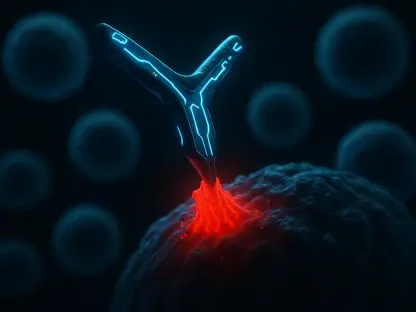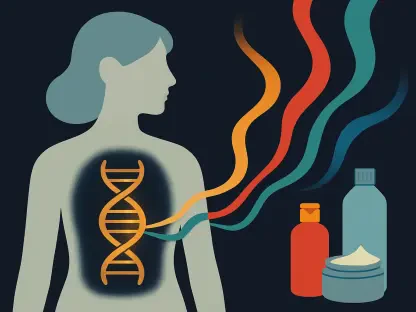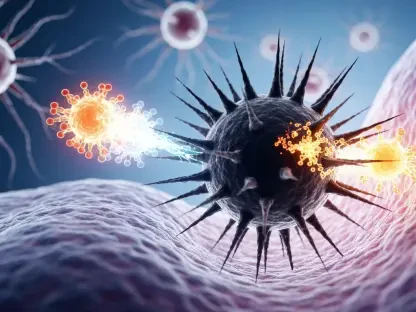Ivan Kairatov, with his extensive expertise in biopharmaceutical research and innovation, sheds light on the next generation of weight loss medications being developed. His insights provide a deeper understanding of the motivations and challenges behind this ambitious project, as well as the scientific intricacies involved in creating a more effective and longer-lasting solution for obesity, a condition that impacts millions worldwide.
What motivated you to focus on developing a new generation of weight loss medications?
The motivation lies in addressing the significant, unmet need for effective obesity treatments. Obesity is not just a cosmetic concern; it is linked to over 180 different diseases. We aim to offer a solution that can help alleviate these risks by developing a drug that not only induces weight loss but also sustains it, helping to reduce the long-standing burden of obesity-related health conditions.
Can you explain the main drawbacks of current weight loss drugs like Ozempic and Wegovy?
Current drugs such as Ozempic and Wegovy, while effective in some regards, have notable drawbacks. Patients often discontinue them due to side effects like nausea or because the benefits wane after stopping the medication. Additionally, concerns about long-term harms like osteoporosis and muscle loss make it critical to develop alternatives that maintain effectiveness without these adverse effects.
How does the inclusion of a fourth hormone receptor enhance the effectiveness of these new drugs?
By targeting a fourth hormone receptor, we aim to enhance the drug’s ability to deliver consistent weight loss outcomes across different patients. This additional receptor, through its unique pathway, complements the triad of GLP-1, GIP, and glucagon, thus offering a more comprehensive strategy to control hunger and energy expenditure, potentially matching the effectiveness of more invasive procedures like bariatric surgery.
Could you walk us through how the hormones GLP-1, GIP, and glucagon work together in weight loss treatments?
These three hormones collaborate to manage both glucose levels and appetite. GLP-1 stimulates insulin production for glucose uptake while also slowing gastric emptying, effectively curbing hunger. GIP works similarly, often combined with GLP-1 for enhanced effects. Meanwhile, glucagon, despite raising blood glucose, boosts energy expenditure and appetite suppression. Together, they form a synergistic blend promoting weight loss.
What challenges did you face while integrating peptide YY (PYY) into your new drug design?
Integrating PYY was challenging because it belongs to a structurally distinct class from GLP-1, GIP, and glucagon. We couldn’t simply blend their structures into one peptide due to these differences. Instead, we had to innovate by joining peptide segments end-to-end, creating a tetra-functional candidate that successfully integrates PYY’s unique mechanisms.
How do you anticipate the new drug will compare to bariatric surgery in terms of effectiveness and long-term results?
Our goal is to achieve weight loss results comparable to those of bariatric surgery, which is considered the gold standard. While surgery offers up to 30% weight loss that’s often long-lasting, our drug aims to reach similar outcomes non-invasively, offering a treatment option for those unable to undergo surgery while also minimizing surgical risks and recovery time.
What makes the new chimera drug different from the existing tri-functional drugs?
This chimera includes not just modifications but an entirely new strategic composition by incorporating PYY alongside GLP-1, GIP, and glucagon. The addition of PYY aims to tackle appetite control through a different mechanism than the other hormones, and together they offer a broader and potentially more resilient therapeutic profile against the typical issues of weight regain and side effects.
Can you elaborate on why patients often regain weight after discontinuing GLP-1 drugs, and how your design addresses this issue?
Weight regain is a prevalent issue when patients cease using GLP-1 drugs, as their appetite suppression ends. Our multi-receptor approach not only prolongs the appetite suppressant effects by engaging multiple pathways but also aims to maintain energy expenditure levels. This, combined with lifestyle modifications, could help provide a more enduring weight management solution.
How does targeting multiple hormone receptors potentially improve weight loss outcomes compared to targeting fewer receptors?
Targeting multiple receptors allows us to simultaneously influence several pathways involved in hunger, glucose metabolism, and energy use. This holistic approach can cover more physiological bases, providing a buffer against individual biological variability, and thus, more reliable and sustained weight loss across a broader patient population.
What role do lifestyle changes play in complementing drug treatments for weight loss?
Lifestyle changes remain an essential component of effective weight management. While medications can significantly reduce weight and improve metabolic parameters, combining them with healthy habits like diet and exercise ensures more sustainable results. This dual approach helps maintain muscle and bone health, which are sometimes compromised during rapid weight loss.
Can you discuss the potential side effects of this new drug and how it aims to minimize them compared to existing treatments?
The design of the new drug seeks to reduce the common side effects of nausea and loss of muscle mass associated with current medications. By including PYY and altering the drug composition to enhance tolerance, we aim to create a solution with reduced gastrointestinal discomfort and a better safety profile overall.
What are some potential challenges or obstacles you foresee for this new drug in clinical trials?
One challenge is proving consistency across various patient demographics, given the inherent variability in receptor expression. Additionally, ensuring the long-term safety and efficacy of engaging multiple hormone pathways will be crucial. Nonetheless, these challenges push us to refine our approach and confirm the benefit-risk balance through careful study design and thorough testing.
How important is it for patients to maintain lifestyle changes alongside medication use to achieve lasting results?
Lifestyle adjustments are critical. They not only support the drug’s effects but also help foster long-term behavioral changes that contribute to maintaining weight loss. Patients who engage in regular physical activity and adopt balanced diets can often avoid the relapse into old habits that might otherwise negate the improvements achieved with medication.
How did your team work around the structural differences between PYY and the other hormones when designing the new drug?
Given PYY’s distinct structure, we innovated by crafting a peptide that joined segments end-to-end, respecting the structural individuality while enabling receptor targeting. This method retained the functional integrity of each hormone within the new composite drug, a creative solution to an otherwise structurally challenging problem.
What are the next steps in the development and testing phase for this new drug?
Our next steps involve advancing through clinical trials to rigorously evaluate safety and efficacy. We’re focusing on robust trial designs that include diverse populations to ensure the drug’s effectiveness and adaptability. This process will help us refine dosing regimens and further assess the potential long-term benefits and risks of this innovative treatment.









